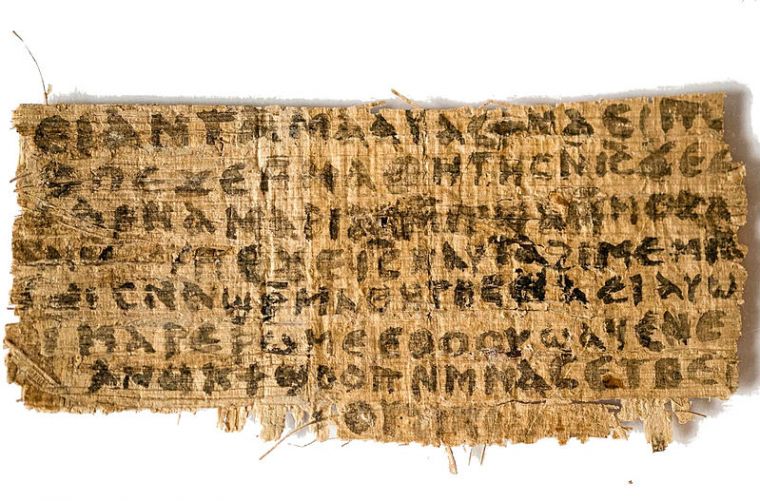'Gospel of Jesus' Wife' not a forgery, claim scientists, while Vatican says it is fake

Researchers at top universities maintain that the "Gospel of Jesus' Wife" is an excerpt from an ancient document, and not a recent forgery.
The papyrus fragment was acquired by an anonymous owner in 1997, and given to Harvard Divinity School's Hollis Professor of Divinity, Dr. Karen King, in 2011. Dr. King identified the script as Sahidic Coptic, a southern Egyptian dialect, and dated it around the fourth century AD.
The fragment contans the controversial lines: "Jesus said to them, 'My wife...'" and "she will be able to be my disciple."
Columbia University researchers determined that the ink's carbon character matches papyri samples from the first to eighth centuries AD. MIT research confirmed that the fragment is homogenous in type, age, and oxidation. A handwriting analysis showed no evidence of overwriting, additions, or other tampering.
In a paper published April 10 in the Harvard Theological Review, this research and others were presented as evidence that the fragment is authentic. In 2012, the Vatican maintained that the excerpt is the work of a forger.
"Substantial reasons would lead one to conclude that the papyrus is indeed a clumsy forgery," L'Osservatore Romano Editor Gian Maria Vian wrote. "In any case, it's a fake."
Durham University Professor Francis Watson also questioned the fragment's authenticity, stating that the fragment is a combination of lines from the Gospel of Thomas.
Brown Professor Leo Depuydt's stated that the idea that the fragment is authentic is almost laughable.
The excerpt contains "gross grammatical errors," Depuydt wrote in an article published in the Harvard Theological Review.
He said that the fragment is so obviously a fraud that it "seems ripe for a Monty Python sketch."
Depuydt also stated the text matches writings found in 1945, and that we need not be impressed by the author's use of Sahidic Coptic.
"An undergraduate student with one semester of Coptic can make a reed pen and start drawing lines," he told the New York Times.











